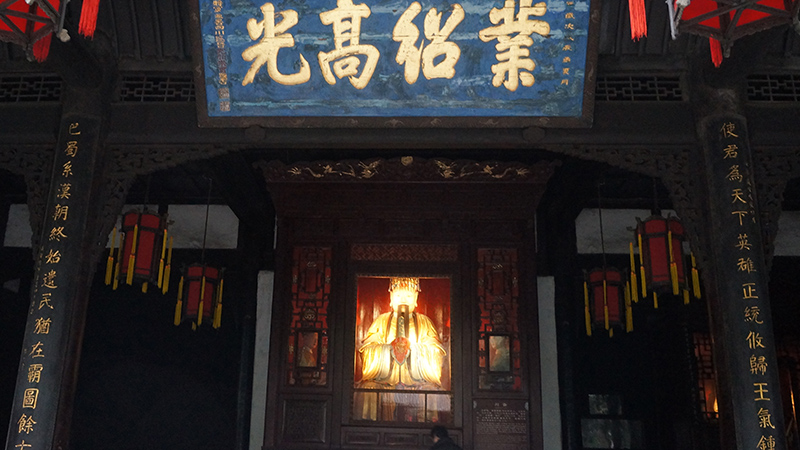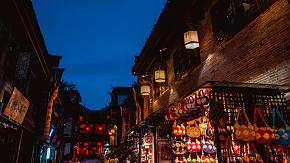Wuhou Temple of Chengdu - Sacred Place of the Three Kingdoms
Initially built in 223AD, Chengdu's Wuhou Temple is a historical and cultural relic that is known as a "Sacred Place of the Three Kingdoms (the three kingdoms: Wei, Shu, and Wu that formed the Tripartite Confrontation in ancient China from 220AD to 280AD)". Wuhou Temple has been a famous tourist destination for more than 1780 years.
As a perfect example of the Three Kingdoms' architecture, the Wuhou Temple consists of five main buildings. They are, respectively, the front gate, the interior gate, the Hall for Emperor Liu Bei (Emperor of Shu Kingdom), the Hall for Zhuge Liang (the predominantly talented military advisor and strategist of Emperor Liu Bei), the Huiling Mausoleum (the mausoleum of Emperor Liu Bei).
 Wuhou Temple
Wuhou Temple
In the middle of the front gate, there hangs a tablet carved with the words "Han Zhaolie Miao," meaning the Shrine of Emperor Liu Bei, and between the front gate and the interior gate, there are six stone tablets among which the most distinctive one is the most precious relic of the Wuhou Temple. It is called the Sanjue Tablet. On the Tablet are exquisite calligraphy and inscriptions by famous people of the Tang Dynasty (618-907). It introduces Zhuge Liang's life and is intended to inspire later emperors, so it is called the "Tablet of Excellent."
After the interior gate is the highest building of Wuhou Temple, the Hall of Emperor Liu Bei, in the center is a large statue of Emperor Liu Bei, and on either side, there are statues of Guan Yu and Zhang Fei (the two important senior generals and also the sworn brothers of Emperor Liu Bei) together with their sons, grandsons, and the other senior generals of Shu Kingdom. Behind the Hall of Emperor Liu Bei it is the Hall of Zhuge Liang. With the couplets representing the instructive theories of governing the state affairs of Zhuge Liang, the highlight of this hall is a gold-plated statue of Zhuge Liang. The three drums in front of the statue are said to be the ones used during Zhuge Liang's battles. The drums are delicately carved with flower patterns and thus included among the list of Wuhou Temple's most treasured processions. To the west of the Hall of Zhuge Liang and adjacent to the Hall of Emperor Liu Bei is the Huiling Mausoleum that consists of a bumper gate, a sacred passage, and an imperial bed-chamber, which enshrine the bodies of Emperor Liu Bei and two of his wives.
East of the Wuhou Temple is the "First Street of Shu Kingdom," the Jinli Old Street, which is a combination of ancient and modern life in Chengdu. Its many shops are built in China's traditional architectural styles, and it shows what life was like in ancient China. It is a wonderful place for visitors to relax and perhaps do a little shopping after visiting the Wuhou Temple. Contact us for a Chengdu tour with Wuhou Temple.
Related Posts You May Like
What Our Clients Say
"Great Customized Service", "Trip of A Lifetime", "Exceed All Expectations"


